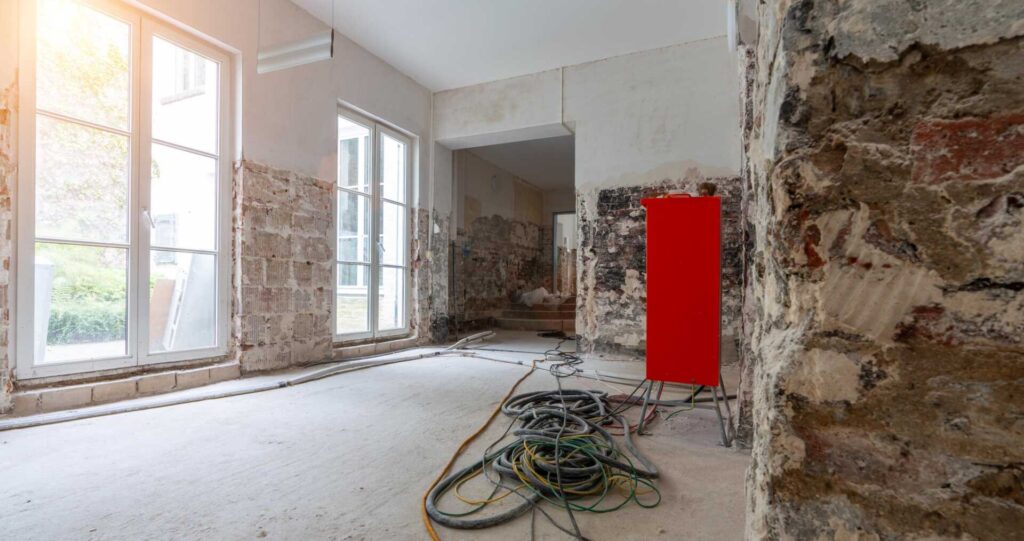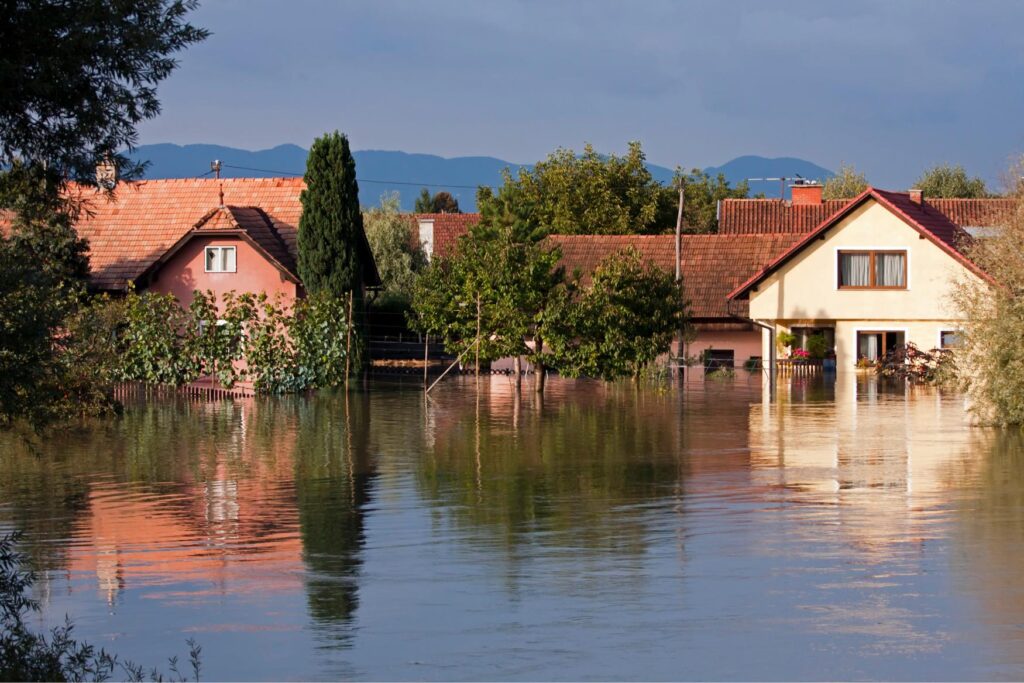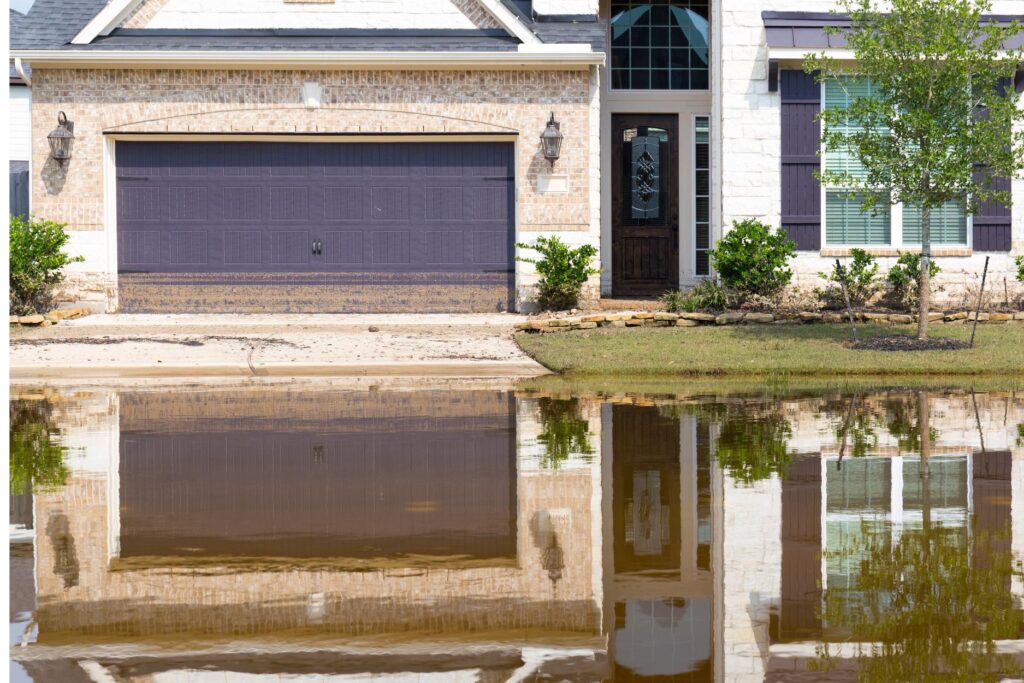Contents
If you’ve ever pondered how to enhance the comfort of your home, explore the power of insulation. By making strategic improvements, you can transform your living space into a cozy retreat that’s both energy-efficient and inviting. From optimizing attic insulation to sealing air leaks, each step plays a significant role in elevating your home’s comfort level. So, are you prepared to discover the secrets to a more comfortable and energy-conscious living environment?
Key Takeaways
- Upgrade insulation in heat loss areas for energy efficiency.
- Seal air leaks around windows and doors to enhance comfort.
- Improve attic insulation and ventilation for temperature control.
- Upgrade window insulation with thermal drapes or double-pane windows.
- Insulate basement walls and floors for energy savings and soundproofing.
Evaluate Current Insulation Levels
Evaluating your current insulation levels is essential to understanding the effectiveness of your home’s thermal barrier. An insulation evaluation can provide valuable insights into areas where your home may be losing heat during the winter and gaining heat during the summer.
By conducting a thorough insulation inspection, you can identify potential weaknesses in your home’s energy efficiency and take steps to address them, leading to significant cost savings in the long run.
During the insulation evaluation, a professional will examine the type, quality, and quantity of insulation in your home. They’ll check for any gaps, compressed areas, or signs of moisture that could compromise the insulation’s effectiveness.
By evaluating these factors, you can determine if your current insulation levels meet the recommended standards for energy efficiency. If improvements are necessary, upgrading your insulation can enhance your home’s ability to maintain a comfortable temperature year-round.
Investing in better insulation improves energy efficiency and results in substantial cost savings over time. Proper insulation helps reduce the workload on your heating and cooling systems, leading to lower energy bills.
Seal Air Leaks
To improve your home’s energy efficiency and maintain ideal comfort levels, it’s essential to address and seal any air leaks present in your living space. Air sealing involves closing gaps and cracks that allow air to escape or enter your home, leading to energy waste and potential discomfort.
Weatherproofing your home through effective air sealing not only enhances energy efficiency but also contributes to better indoor air quality and temperature consistency.
Start by inspecting common areas where air leaks occur, such as around windows and doors, electrical outlets, plumbing penetrations, and attic hatches. Use caulking or weatherstripping to seal gaps in these areas. Additionally, consider adding door sweeps to exterior doors to prevent drafts.
Properly sealing air leaks will make your home more energy efficient, reducing the strain on your heating and cooling systems.
Energy-efficient homes benefit from proper ventilation improvements alongside air sealing. While sealing air leaks is important, ensuring adequate ventilation helps maintain a healthy indoor environment by controlling moisture and pollutants.
Consider installing exhaust fans in kitchens and bathrooms and using HVAC systems with proper ventilation features.
Insulate Attic Space
Consider insulating your attic space to enhance your home’s energy efficiency and overall comfort levels. A well-insulated attic can greatly reduce heat transfer, keeping your home warmer in the winter and cooler in the summer.
To start, evaluate your attic’s current insulation levels. If they’re insufficient, you have various options to improve insulation, such as spray foam or blown insulation.
Proper attic ventilation is essential when insulating the space. It helps regulate temperature and moisture levels, preventing issues like mold and mildew. Additionally, installing a radiant barrier in your attic can further enhance insulation by reflecting heat away from your home.
When choosing insulation materials, consider spray foam for its high efficiency in sealing gaps and preventing air leakage. Blown insulation, on the other hand, is great for filling in irregular spaces and providing uniform coverage. Both options offer excellent thermal resistance, helping you save on energy bills and maintain a cozy home environment.
Remember to seal any air leaks in the attic before adding insulation to maximize its effectiveness.
Upgrade Window Insulation
Enhance your home’s energy efficiency and comfort by upgrading the insulation on your windows. Energy-efficient windows are a great investment to reduce heat transfer and maintain a consistent temperature inside your home.
If you’re not ready to replace your windows, consider adding thermal drapes. These heavy, insulated curtains can help keep warm air in during the winter and out during the summer.
Another option is to install double-pane windows if you have single-pane ones currently. Double-pane windows provide an extra layer of insulation, reducing heat loss and outside noise.
If replacing windows isn’t feasible, you can opt for DIY weatherproofing. Use weather stripping around the window frame to seal any gaps and prevent drafts. Additionally, applying window film can add a layer of insulation to your windows, helping to improve energy efficiency.
Insulate Basement Walls
For improved energy efficiency and home comfort, insulating your basement walls is a practical step worth contemplating. When considering basement insulation, it’s important to address two key factors: moisture control and thermal performance. Moisture control is vital to prevent mold growth and structural damage. By insulating your basement walls, you create a barrier that helps regulate moisture levels, keeping your basement dry and comfortable.
Insulating basement walls also contributes to significant energy savings. Proper insulation minimizes heat loss, reducing the workload on your heating system and lowering energy bills. To enhance thermal performance, consider exterior insulation. This method involves insulating the outside of your basement walls, creating a continuous thermal barrier. Exterior insulation is particularly effective in regions with cold winters, as it helps maintain a consistent indoor temperature.
When insulating your basement walls, it’s important to choose the right materials and installation techniques. Fiberglass and foam board insulation are popular choices for their insulating properties and moisture resistance. Proper installation is key to maximizing the benefits of insulation, so consider seeking professional assistance if needed.
Install Weather Stripping
To enhance your home’s comfort and energy efficiency, make sure you properly seal doors and insulate windows effectively with weather stripping.
By sealing any gaps around doors and windows, you can prevent drafts and maintain a consistent indoor temperature.
This simple step can greatly reduce energy costs and improve the overall comfort of your living space.
Sealing Doors Properly
Seal your doors properly by installing weather stripping to prevent drafts and improve energy efficiency in your home. Weather stripping and draft stoppers play an essential role in keeping your home comfortable by sealing gaps that may let cold air in during winter or hot air in during summer. Not only does this simple step help in energy savings by reducing the strain on your heating and cooling systems, but it also contributes to soundproofing your living spaces.
To help you understand the benefits of installing weather stripping, let’s look at a comparison table below:
| Benefits | Weather Stripping | Draft Stoppers |
|---|---|---|
| Energy Efficiency | ✓ | ✓ |
| Soundproofing | ✓ | |
| Easy Installation | ✓ | ✓ |
| Cost-Effective | ✓ | ✓ |
| Versatile Usage | ✓ |
Insulating Windows Effectively
Enhance the energy efficiency and comfort of your home by effectively insulating your windows with weather stripping. Proper insulation can lead to significant energy savings and create a cozy indoor environment.
Here are some practical tips to insulate your windows effectively:
Window Film for Energy Savings: Consider applying window film to your windows. This thin, transparent material helps reduce heat loss in the winter and heat gain in the summer, leading to improved energy efficiency. It also helps block harmful UV rays, protecting your furniture and flooring.
Draft Stoppers as a DIY Solution: Draft stoppers, also known as draft snakes, are an easy do-it-yourself solution to prevent cold drafts from entering your home through gaps in windows. Simply place these long fabric tubes along the bottom of your windows to block drafts and maintain a comfortable indoor temperature.
Weather Stripping for Tight Seals: Install weather stripping around your windows to create a tight seal. This can help prevent air leaks and enhance insulation, keeping your home warm in the winter and cool in the summer.
Insulate Floors
Consider insulating your floors to improve the overall comfort and energy efficiency of your home. Floor insulation benefits include reducing heat loss, minimizing drafts, and enhancing soundproofing within your living space. By insulating your floors, you can create a more consistent temperature throughout your home, making it cozier during the colder months and cooler in the summer.
DIY floor insulation techniques can be a cost-effective and practical solution. One method is to lay down rugs or carpets, especially in rooms with hard flooring surfaces like tile or hardwood. Area rugs provide additional warmth and act as a barrier to prevent heat from escaping through the floor. Additionally, using draft excluders along the bottom of doors can help maintain the temperature in a room and prevent cold air from seeping in.
Another DIY option is to install foam board insulation beneath the floor. This can be particularly beneficial in areas like basements or crawl spaces. By insulating these spaces, you can prevent cold air from rising through the floors and keep the rooms above more comfortable. Foam board insulation is relatively easy to install and can make a noticeable difference in your home’s overall energy efficiency and comfort levels.
Consider Insulating Garage
To further improve your home’s comfort and energy efficiency, insulating your garage can provide additional benefits in maintaining a consistent temperature and reducing energy costs.
When considering garage insulation, keep in mind the following key points:
Garage Insulation: Insulating your garage helps create a barrier between the interior of your home and the outdoor elements. This can prevent heat loss in the winter and heat gain in the summer, leading to more stable temperatures inside your home.
Energy Efficiency: By insulating your garage, you can improve the overall energy efficiency of your home. A well-insulated garage means your HVAC system doesn’t have to work as hard to regulate the temperature, potentially lowering your energy bills.
Temperature Control: Insulating your garage helps with temperature control in the space itself and has a positive impact on the adjacent rooms. Consistent temperatures throughout your home can enhance comfort levels for you and your family.
Utilize Insulated Curtains
Insulated curtains can effectively enhance the thermal efficiency of your home by providing an additional layer of insulation for your windows. Energy-efficient curtains, also known as thermal drapes, offer a simple yet efficient way to keep your home cozy and reduce energy costs.
Energy-efficient curtains are designed with special materials that help block out drafts and maintain room temperature. They act as a barrier against heat loss during the winter and heat gain during the summer. By using insulated curtains, you can create a more comfortable living environment while saving on heating and cooling expenses.
When choosing energy-efficient curtains, look for ones with multiple layers or those made from heavy fabrics like velvet, suede, or tweed. These materials provide better insulation and help in reducing heat transfer through your windows. Additionally, curtains with thermal lining should be considered, as they can further enhance their insulating properties.
To maximize the benefits of insulated curtains, make sure to keep them closed during the night and on particularly cold or hot days. This simple step can greatly improve the overall comfort of your home by maintaining a consistent indoor temperature.
Incorporating energy-efficient curtains into your home decor enhances insulation and adds a stylish touch to your living space. Make the most of these practical and cost-effective window treatments to create a snug and energy-efficient home environment.
Insulate Pipes and Water Heater
Enhance your home’s energy efficiency further by insulating pipes and your water heater to reduce heat loss and improve overall comfort. Insulating these components not only helps conserve energy but also guarantees that you have a cozy and comfortable living space all year round.
Here’s how you can go about insulating your pipes and water heater:
Insulate Ductwork: By insulating your ductwork, you can prevent heat loss as the air travels from your heating system to different rooms in your home. This helps maintain a consistent temperature throughout the house, making it feel more comfortable and inviting.
Soundproof Walls: Insulating your walls not only helps with soundproofing but also plays an essential role in retaining heat. Proper insulation reduces heat transfer through walls, keeping the warmth inside during the colder months and the heat out during summer, creating a pleasant environment inside your home.
Wrap Your Water Heater: Wrapping your water heater in an insulating blanket can significantly reduce heat loss, especially in older models. This simple step can lower your energy bills and ensure that you have access to hot water whenever you need it, promoting a sense of comfort and convenience in your daily routine.
Final Thoughts
Enhancing home comfort with insulation is a practical and effective way to boost energy efficiency and indoor comfort. By assessing current insulation levels, sealing air leaks, and insulating key areas like the attic and windows, homeowners can create a more comfortable living environment.
For instance, upgrading window insulation in a drafty bedroom can greatly reduce heat loss and improve comfort levels, making it a worthwhile investment for any homeowner.




